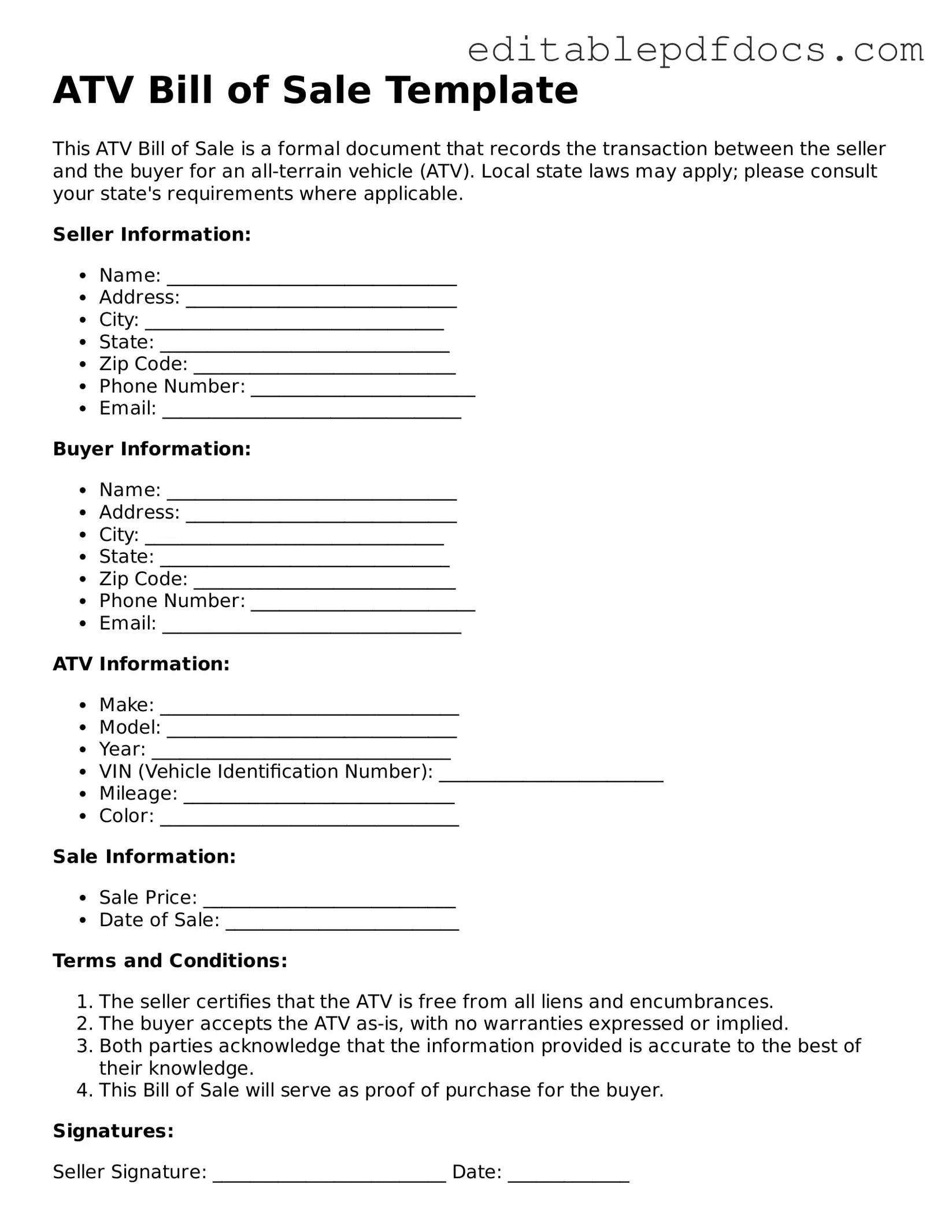Filling out an ATV Bill of Sale form can seem straightforward, but many individuals make common mistakes that can lead to complications down the line. One frequent error is failing to include all necessary information. Buyers and sellers need to provide complete details, such as the names and addresses of both parties, the Vehicle Identification Number (VIN), and the sale price. Omitting any of this crucial information can cause issues during registration or when transferring ownership.
Another mistake is not accurately describing the condition of the ATV. It's essential to provide an honest assessment of the vehicle's state. This includes noting any damages, repairs, or modifications. Misrepresenting the condition can lead to disputes between the buyer and seller, and it may even affect the sale’s legality.
People often overlook the importance of signatures. Both the buyer and the seller must sign the Bill of Sale to validate the transaction. Without these signatures, the document may not hold up in legal situations. Additionally, failing to date the form can create confusion about when the sale took place, which is vital for record-keeping and warranty purposes.
Another common error is neglecting to check local regulations regarding the sale of ATVs. Each state may have specific requirements for Bill of Sale forms, including additional disclosures or documentation. Ignoring these requirements can result in delays or even fines.
Some individuals also forget to make copies of the completed Bill of Sale. It is crucial for both parties to retain a copy for their records. This document serves as proof of the transaction and can be important for future reference, especially if any disputes arise later.
Inaccurate pricing is another mistake that can lead to complications. Sellers should ensure that the sale price reflects the fair market value of the ATV. Buyers should also be cautious and verify that the price matches their expectations based on the ATV's condition and market trends.
Lastly, many people fail to understand the importance of including any warranties or guarantees. If the seller offers any warranties, these should be clearly stated in the Bill of Sale. This protects both parties and clarifies what the buyer can expect after the purchase.
